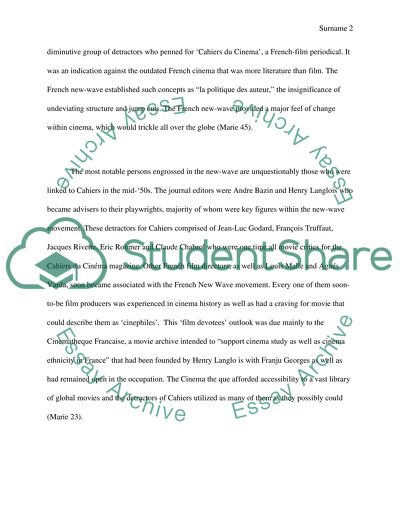Cite this document
(“The French New Wave style of film Essay Example | Topics and Well Written Essays - 2250 words”, n.d.)
The French New Wave style of film Essay Example | Topics and Well Written Essays - 2250 words. Retrieved from https://studentshare.org/visual-arts-film-studies/1478940-the-french-new-wave-style-of-film
The French New Wave style of film Essay Example | Topics and Well Written Essays - 2250 words. Retrieved from https://studentshare.org/visual-arts-film-studies/1478940-the-french-new-wave-style-of-film
(The French New Wave Style of Film Essay Example | Topics and Well Written Essays - 2250 Words)
The French New Wave Style of Film Essay Example | Topics and Well Written Essays - 2250 Words. https://studentshare.org/visual-arts-film-studies/1478940-the-french-new-wave-style-of-film.
The French New Wave Style of Film Essay Example | Topics and Well Written Essays - 2250 Words. https://studentshare.org/visual-arts-film-studies/1478940-the-french-new-wave-style-of-film.
“The French New Wave Style of Film Essay Example | Topics and Well Written Essays - 2250 Words”, n.d. https://studentshare.org/visual-arts-film-studies/1478940-the-french-new-wave-style-of-film.


